|
Displaying items by tag: Art
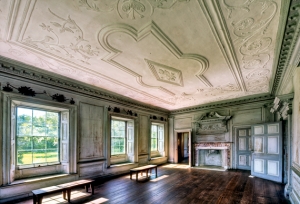
At Drayton Hall, a historic site of the National Trust for Historic Preservation in Charleston, South Carolina, a museum interpreter, about sixty-five years old, welcomed a group of elementary school students to the site. She summarized the history of the plantation and explained that construction of its main house had begun in 1738. When she paused for questions, a student politely raised her hand and asked, “Were you living here when the house was built?” Another story comes from the manager of the museum’s shop where Civil War caps from both armies are sold. About twice a month, adults ask the manager, “What’s the difference between the blue cap and the gray?” Such stories are told across the nation, but are not relegated to historic sites. Pulitzer Prize-winning historian David McCullough tells of giving a lecture at a well-respected college in the Midwest. Afterwards, a bright student told him, “Until I heard your talk, I’d never realized the original thirteen colonies were all along the East Coast.”1
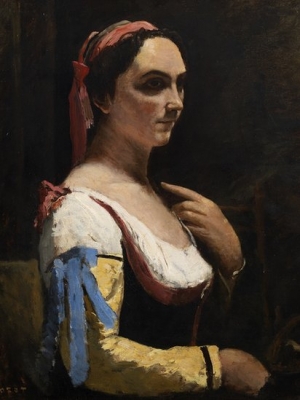
The late German-born British painter, Lucian Freud (1922-2011), specified in his will that his private art collection was to be donated to British museums rather than burdening his family with an inheritance tax after his death. The bequest is part of a British law that allows “acceptance in lieu” of taxes for authors, artists, and collectors.
Considered one of Britain’s greatest painters best known for his portraits and figurative works, Freud owned a number of important masterpieces including Jean-Baptiste Camille Corot’s (1796-1875) Femme á la Manche Jaune (The Italian Woman or Woman with Yellow Sleeve) and three bronze sculptures by Edgar Degas (1834-1917). It has been determined that the Corot painting, which has not been on public view in over 60 years, will go to the National Gallery in London and the Degas sculptures, Horse Galloping on Right Foot, La Masseuse, and Portrait of a Woman Head Resting on One Hand, will go to Somerset House’s Courtauld Gallery.
The donation is a thank you of sorts from Freud to Britain. The grandson of Sigmund Freud, Lucian escaped Hitler’s wrath when he came to England as a child. He became a British citizen in 1939.
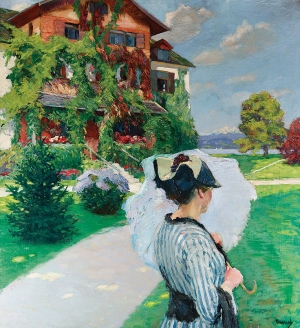
2nd Annual Naples Art, Antique & Fine Jewelry Show
February 8–11, 2013; Preview: February 7, 2013
Naples Exhibition Center, 100 Goodlette Road
South Naples, Florida 34102
10th Anniversary Palm Beach Jewelry, Art & Antique Show
February 16–19, 2013; Preview: February 15, 2013
Palm Beach Country Convention Center, 650 Okeechobee Blvd.
West Palm Beach, Florida 33401
After its successful debut in 2012, The Palm Beach Show Group (PBSG) is proud to announce that the Naples Art, Antique & Jewelry Show will be held this year from February 8th to the 11th. More than 75 high-caliber dealers will be exhibiting. As an indicator of how strong the inaugural show was, the majority of the 2012 participating dealers signed up again for 2013.
Scott Diament, President and CEO of the PBSG remarked, “The second annual Naples Show will again provide exhibitors with the unique opportunity to not only meet sophisticated and educated clientele from Florida’s Paradise Coast, but also from the Midwest region, an area from which many attendees travel during this peak season.” Show visitors will gain access to major works of art, antique and estate jewelry, furniture, porcelain, Asian antiquities, American and European silver, glass, textiles, sculpture, contemporary art and many more of the world’s most beautiful collections.
The show's location is ideal for collectors and decorators alike, located just steps from Fifth Avenue, Naples’ world-renowned shopping, dining and entertainment district, and its cultural attractions including museums, theaters, and art galleries.
On President’s Day Weekend, following just four days after the Naples Show, the Palm Beach Jewelry, Art & Antique Show is celebrating its 10th anniversary. With the addition of so many top painting dealers this year, it has become the preeminent show for American and European art of the nineteenth and twentieth centuries. In the art and antiques industry, this is an annual must-attend event and a hallmark in Palm Beach. Many exhibitors, including Peter Finer (the world’s leading specialist in antique arms and armour and new to the show this year) also exhibit at other top-notch shows such as TEFAF Maastricht, The Winter Antiques Show, Masterpiece London and The American Art Fair.
The Palm Beach Show was so successful last year that over 50 dealers were waitlisted for this year's show since the demand to exhibit exceeded capacity, an exceedingly rare situation in this volatile economic climate.
“Our Naples Show is the perfect complement to our Palm Beach Show,” adds Diament. “We are now providing our exhibitors with tremendous back-to-back exposure to the most affluent collectors from the Northeast, who choose to winter in Southeast Florida, and the most affluent collectors from the Midwest, who choose to spend their winters on the West Coast of Florida. Thousands of patrons—from private collectors to museums curators to investors—are anticipated to attend.
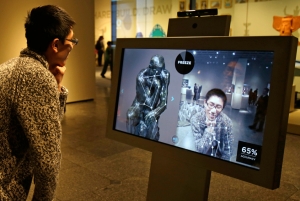
On January 21, 2013, the Cleveland Museum of Art opened Gallery One, an interactive gallery that brings together art and technology to enhance as well as personalize each museum visitor’s experience. Gallery One features the largest multi-touch screen in the United States, which displays images of over 3,500 objects from the institution’s permanent collection. Known as the Collection Wall, the touchscreen spans 40 feet and helps patrons create their own tactile tour of the museum while rotating works according to theme, time period, and technique.
Gallery One, which includes works by Pablo Picasso (1881-1973), Auguste Rodin (1840-1917), and Chuck Close (b. 1940), employs different hands-on activities to engage visitors using the power of technology. For example, one game asks viewers to recreate the poses of sculptures in the museum’s collection; the ArtLens ipad application illustrates how works of art were made, where they came from, and what inspired their creation. The ArtLens application uses image recognition software and allows visitors to scan objects and access additional multimedia content such as audio tours and educational information for up to 9 hours after their visit.
David Franklin, the Cleveland Museum’s Sarah S. and Alexander M. Cutler Director, said, “Gallery One offers an unparalleled experience for visitors of all ages. The space connects art and people, art and ideas, and people with people…we are especially proud to lead the way internationally in using technology to enhance and customize the art museum experience.”
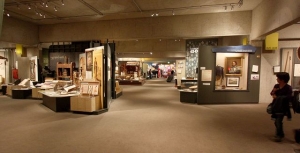
The Oakland Museum of California, which is devoted to the art, history, and natural science of California, was been burglarized for the second time in two months on Monday, January 7, 2013. During the first robbery, the thief made off with a number of objects and pieces of gold that were on view as part of an exhibition about California’s Gold Rush. This week, a thief stole a significant gold and quartz box from the same exhibition. The box, which features elaborate decorations depicting early pioneer life, could be worth as much as $800,000.
Officials believe that the most recent break-in was pre-meditated and that the burglar pinpointed specific items to steal, making their way in and out of the museum very quickly. Security camera footage confirms that the thief worked alone. Both recent burglaries occurred on Mondays, when the Oakland Museum is closed to the public. Officials are investigating whether or not the two crimes are connected.
A $12,000 reward is being offered for the safe recovery of the box, which officials fear could be melted down for its materials.
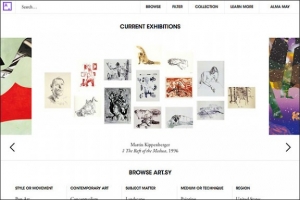
Art.sy, a New York City-based startup, which helps art lovers discover new works of interest using a Pandora-like model, has been at the center of an unexpected controversy. Art.sy shares the same official domain suffix (.sy) as the Syrian Arab Republic and as conflicts continue to rise in the worn-torn country, it has become clear that Art.sy needs to make some adjustments.
Art.sy’s main webpage was taken offline on January 2, 2013 and traffic was redirected to a backup site, Artsy.net. Officials explained that Art.sy’s domain, which had been paid for through the end of the year, was coming up as incorrectly expired and that the site would be restored the next day. As of January 4, Art.sy has officially changed its name to Artsy and moved its domain to artsy.net, permanently.
Artsy purchased their .sy domain in 2009, before the violence in Syria began to worsen. The site, which offers over 21,000 high-resolution artworks for the enjoyment of users, hopes to run uninterrupted from now on.
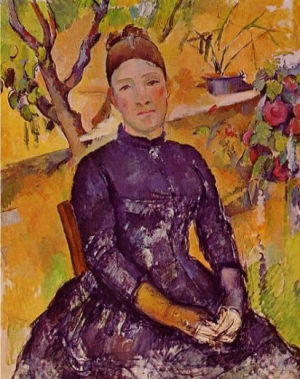
In December 2010, Pierre Konowaloff, the heir to Russian art collector Ivan Morozov, filed a lawsuit claiming that he was the rightful owner of Paul Cézanne’s (1839-1906) painting Madame Cézanne in the Conservatory (1891), not the Metropolitan Museum of Art. Konowaloff explained that Morozov’s art collection was seized by the Bolshevik regime in 1918 and that when Stephen Clark, the collector and museum trustee who bequeathed the work to the Met in 1960, first bought the painting from Knoedler & Company in 1933, he did not carry out due diligence. Accusing the Met of wrongful acquisition, possession, display and retention, Konowaloff demanded that the work be returned to him and requested restitution for monetary damages.
On December 18, a judge in the 2nd District Court of Appeals in Manhattan ruled that the Met could keep the Cézanne masterpiece, as the museum remains the work’s rightful owner. The Met has stood behind their right to the painting since the beginning of the entanglement with Konowaloff. The lawsuit was initially dismissed in 2011 by judge Shira Scheindlin who said that a U.S. court has no basis for questioning a decision made by a foreign government on distant soil. After the rejection of Konowaloff’s appeal, Met officials can finally leave the dispute behind them.
Konowaloff filed a similar suit against Yale University in 2009 over Vincent van Gogh’s (1853-1890) The Night Café (1888). Konowaloff claimed that the van Gogh painting was also stolen during the Russian Revolution and bought by Clark regardless of its questionable history.
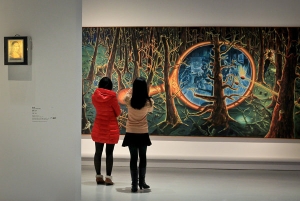
The Centre Pompidou in Paris sent a number of French masterpieces to Shanghai’s Power Station of Art for the exhibition Electric Fields: Surrealism and Beyond – La Collection du Centre Pompidou, which opened on December 16. The show marks the first collaboration between the Pompidou, a leading museum of modern and contemporary art, and a Chinese institution.
The exhibition, which is part of the Shanghai Biennale, features approximately 100 works from the Pompidou’s collection including works by Rene Magritte (1898-1967), Andreas Gursky (b. 1955), Marcel Duchamp (1887-1968), and Ed Ruscha (b. 1937). The show is divided into six categories that explore various Surrealist themes and includes paintings, sculpture, video and manuscripts.
The show’s title is a combination of two influences – the name of the venue, a former electric power station, and Andre Breton (1896-1966) and Philippe Soupault’s (1897-1990) seminal piece of Surrealist literature, The Magnetic Fields (1919). The exhibition runs through March 15, 2013 in Shanghai.
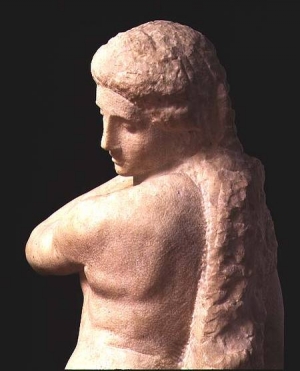
As part of a yearlong celebration of Italian culture hosted by Italy’s foreign minister, Michelangelo’s (1475-1564) iconic work, David-Apollo, will be go on view today at the National Gallery of Art in Washington, D.C. Minister Giulio Terzi di Sant’Agata unveiled the sculpture yesterday, December 12. David-Apollo will be on view in the West Building’s Italian galleries through March 3, 2013.
Michelangelo carved David-Apollo in 1530 for Baccio Valori, who served as the interim governor of Florence per the Medici pope Clement VII’s appointment. Michelangelo and the pope were at political odds, but the artist wished to make peace with the Medici through his work. Michelangelo never finished David-Apollo as he left Italy and never returned after Clement VII’s death.
Part of the Museo Nazionale del Barello’s collection in Florence, David-Apollo traveled to the National Gallery once before in 1949. The masterpiece’s installation in Washington over sixty years ago coincided with former president Harry Truman’s inaugural reception and attracted more than 791,000 visitors. In 2013, David-Apollo’s presentation will coincide with President Barack Obama’s inauguration.
The Year of Italian Culture, launched by Sant’Agata under the auspices of the President of the Italian Republic, Giorgio Napolitano, will bring a range of Italian masterpieces to nearly 70 cultural institutions across the United States. Works range from classical and Renaissance to baroque and contemporary and cover the realms of art, music, theater, cinema, literature, science, design, fashion, and cuisine.
On Monday, December 10, Zurich, Switzerland’s largest city, admitted to losing track of 5,176 works of art. The realization came after the city performed the first full inventory of its collection that is comprised of 35,000 important pieces in nearly a century. Among the missing objects were approximately 1,400 original works including a painting by Swiss-born architect and pioneer of modern design, Le Corbusier.
Officials expect to locate most of the missing works as the city’s collection is often sent out for exhibitions and is currently spread across more than 500 locations. Zurich’s vast holdings are worth about $130 million in total, but city officials claim the missing works only account for a fraction of amount.
|
|
|
|
|